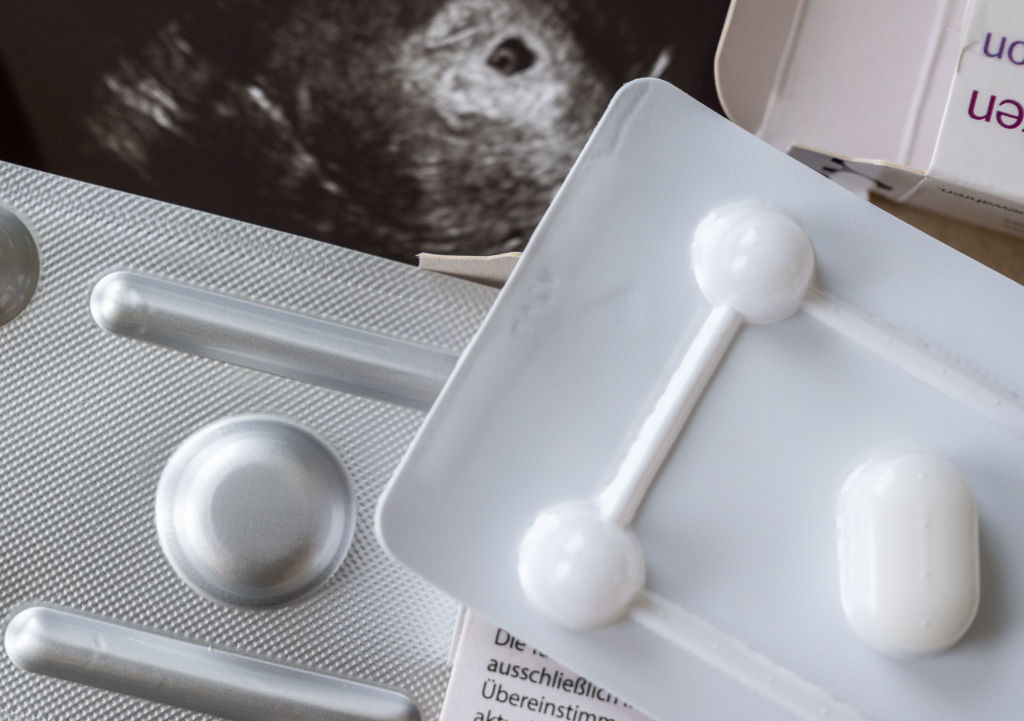Patients can obtain abortion pills by telehealth from the privacy of their own homes and have them mailed directly to them in all 50 states with prompt delivery.

The overall number of abortions obtained through the formal healthcare system in 2023 exceeded that number in 2022, with telehealth abortion rising to 19 percent of the total, according to the Society for Family Planning’s sixth #WeCount report, released last month.
“Access to medication abortion through telehealth continues to play an ever-increasing role in abortion care nationwide—even as the Supreme Court weighs the fate of telehealth abortion care,” said Dr. Ushma Upadhyay, #WeCount co-chair and professor at the University of California, San Francisco’s Advancing New Standards in Reproductive Health (ANSIRH).
The number of abortions rose from 84,180 in May of 2022, to 92,640 in December 2023.
Over 40,000 people in states with severe abortion bans or telehealth restrictions received medication abortion in the second half of 2023 from healthcare providers located in five states that shielded clinicians from criminal and civil liability for providing telehealth abortion care to out-of-state patients.
These numbers do not include people who obtained abortions outside of the medical system, including for free from community networks and online for as little as $28 with three- to five-day delivery. Recent research estimated that the total number of people obtaining abortions outside of the medical system in the six months after Dobbs, from July 1 to Dec. 31, 2022, increased by 26,055. Most of those pills came from community networks.
Guttmacher Institute now estimates that 63 percent of all abortions are done with medications and 37 percent done procedurally. Medication abortion increased from 31 percent of all abortions in 2014 to 63 percent of all abortions in 2023—more than doubling in just ten years.
The #WeCount report found that telehealth was an increasingly common way for people to access abortion care in the United States.
- The number of telehealth abortions has increased more than fourfold since Dobbs—from 3,650 in April 2022 to 16,440 in December 2023.
- Telehealth doubled from 8 percent of all abortions in the 12 months following Dobbs to 19 percent of all abortions in December 2023.
Research shows that telehealth abortion is safe and effective, and patients appreciate the privacy and convenience as well as the timeliness of receiving their abortion medication that way.
Before July 2023, the Society for Family Planning only counted telehealth abortions provided by fully virtual clinics to patients in states without abortion bans. Beginning in July 2023, they began including telehealth abortions provided by brick-and-mortar clinics as well as telehealth abortion services provided to patients located in states restricting abortion.
As of December 2023, five states had telehealth abortion provider shield laws that protected clinicians in those states from criminal and civil actions initiated in other states for telehealth abortion services they provide to patients located in states banning or restricting abortion. Those states included Massachusetts, Washington, Colorado, Vermont and New York. Since then, three more states have passed these laws: California‘s law went into effect on Jan. 1, 2024; Maine’s new law will go into effect on July 1; and Rhode Island just passed a new telehealth provider shield law.
Four healthcare organizations now provide telehealth abortion services to people in states prohibiting or restricting healthcare professionals inside of their borders from providing abortion services.
- Aid Access and Cambridge Reproductive Health Consultants provide telehealth abortion services to people in all 50 states.
- Abuzz provides these services to people in 46 states, and Armadillo Clinic provides services to people in several of these states.
According to the #WeCount report, between October and December 2023, a monthly average of 8,000 people living in states banning or restricting abortion obtained telehealth abortion services from clinicians operating from provider shield states. That number is now about 10,000 people per month, said Elisa Wells of Plan C, which maintains a website with information about how people in the US are accessing abortion pills and safely managing their own abortions.
“The #WeCount numbers demonstrate that abortion bans are not stopping people from having abortions,” Wells told Ms. “It is not surprising that use of telehealth for abortion is growing as people learn about this safe and effective option. Research shows that the vast majority of telehealth abortion patients appreciate the convenience, confidentiality, and control that online access provides. Pills by mail are especially important in states that ban local clinics from offering abortion care because they offer a safe and practical alternative to having to travel to another state for care, which many people simply can’t do.”
Before COVID-19, patients had to travel hundreds of miles to brick-and-mortar clinics, walk a gauntlet of protesters and pay on average $560 for medication abortion. Now they can obtain these pills by telehealth from the privacy of their own homes and have them mailed directly to them in all 50 states with prompt delivery, for a sliding scale fee of up to $150.
The sliding scale fee structure for telehealth abortion for people living in states with abortion bans is supported by two new abortion funds: the Abortion Pill Sustainability Fund and the Abortion Coalition for Telemedicine Fund.
Increasing access to telehealth abortion has been especially important for:
- people living in rural areas who don’t have transportation to abortion clinics;
- people living in the 14 states banning abortion entirely (Alabama, Arkansas, Idaho, Indiana, Kentucky, Louisiana, Mississippi, Missouri, North Dakota, Oklahoma, South Dakota, Tennessee, Texas and West Virginia);
- people living in the three states that ban abortion at six weeks (Florida, Georgia and South Carolina); and
- those living in the five states that allow some abortions but prohibit telehealth abortion (Arizona, Nebraska, North Carolina, South Carolina and Wisconsin).
“The need for abortion care across the country demands that providers, advocates, and lawmakers continue to come together to innovate new strategies to help people access abortion care,” said Upadhyay.
Up next:
U.S. democracy is at a dangerous inflection point—from the demise of abortion rights, to a lack of pay equity and parental leave, to skyrocketing maternal mortality, and attacks on trans health. Left unchecked, these crises will lead to wider gaps in political participation and representation. For 50 years, Ms. has been forging feminist journalism—reporting, rebelling and truth-telling from the front-lines, championing the Equal Rights Amendment, and centering the stories of those most impacted. With all that’s at stake for equality, we are redoubling our commitment for the next 50 years. In turn, we need your help, Support Ms. today with a donation—any amount that is meaningful to you. For as little as $5 each month, you’ll receive the print magazine along with our e-newsletters, action alerts, and invitations to Ms. Studios events and podcasts. We are grateful for your loyalty and ferocity.





